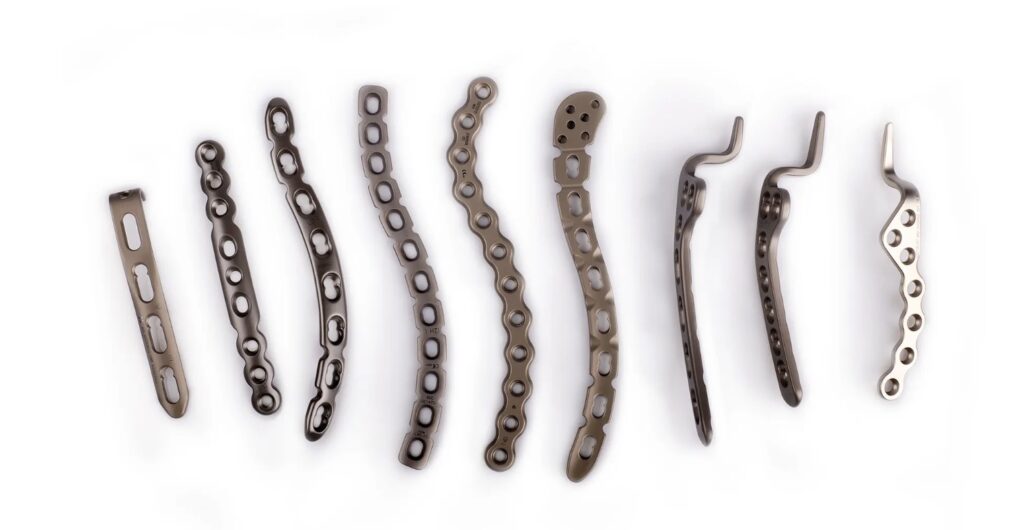When a clavicle fracture occurs, the forces acting on the bone fragments are anything but simple. These deforming forces are driven by the muscles attached to the clavicle, leading to characteristic displacement patterns that can complicate healing. For orthopedic surgeons and healthcare professionals, understanding these forces is crucial for effective treatment and management of clavicle fractures.
Distal Fragment Deformity: Inferior, Medial, and Anterior Displacement
The distal fragment of the fractured clavicle typically displaces inferiorly, medially, and rotates anteriorly. This occurs primarily due to the weight of the arm, which pulls the distal fragment downward. Additionally, the pectoralis major muscle contributes to the medial displacement by pulling the fragment towards the body, leading to shortening of the bone. The trapezius muscle also plays a role in this displacement, but its contribution is more subtle.
- Key Points:
- The weight of the arm causes inferior displacement.
- The pectoralis major pulls the fragment medially, resulting in shortening.
- Anterior rotation occurs due to the interaction of these forces.
This complex interaction of forces makes it challenging to maintain proper alignment during healing, especially if the fracture is significantly displaced. Without intervention, improper healing can lead to malunion or functional limitations.
Proximal Fragment Deformity: Superior and Posterior Displacement
The proximal fragment of the clavicle, on the other hand, displaces superiorly and posteriorly. This is mainly due to the action of the sternocleidomastoid (SCM) muscle, which pulls the proximal fragment upward and backward. The SCM is a powerful muscle, and its influence on the proximal fragment can make reduction and stabilization of the fracture more difficult.
- Key Points:
- The SCM muscle pulls the proximal fragment superiorly.
- Posterior displacement is also driven by the SCM.
- These forces can complicate fracture reduction and alignment.
Understanding the role of the SCM is crucial in managing clavicle fractures, as it directly affects the positioning of the proximal fragment. In cases of severe displacement, surgical intervention may be necessary to counteract these forces and achieve proper alignment.
Clinical Implications of Deforming Forces in Clavicle Fractures
The deforming forces on the fractured clavicle create a unique set of challenges for treatment. In cases where the distal fragment is pulled inferiorly and medially, and the proximal fragment is displaced superiorly and posteriorly, achieving and maintaining alignment can be difficult with conservative treatment methods like slings or figure-of-eight braces.
- Key Points:
- Conservative treatment may not be sufficient for severely displaced fractures.
- Surgical fixation, such as plate fixation or intramedullary nailing, may be required.
- Understanding the forces at play helps guide treatment decisions.
For more detailed information on the management of clavicle fractures, visit OrthoInfo.
Conclusion: Mastering the Forces Behind Clavicle Fractures
In summary, the deforming forces on a fractured clavicle are driven by the weight of the arm, the pectoralis major, the trapezius, and the SCM muscle. These forces cause the distal fragment to displace inferiorly, medially, and anteriorly, while the proximal fragment is pulled superiorly and posteriorly. Recognizing these forces is essential for effective treatment, whether through conservative methods or surgical intervention.

Meta Description:
Learn about the deforming forces on a fractured clavicle, including the role of the pectoralis major, SCM, and the weight of the arm in displacing bone fragments.
Disclaimer:
This article and all articles on this website are for reference only by medical professionals; specific medical problems should be treated promptly. To ensure “originality” and improve delivery efficiency, some articles on this website are AI-generated and machine-translated, which may be inappropriate or even wrong. Please refer to the original English text or leave a message if necessary. Copyright belongs to the original author. If your rights are violated, please contact the backstage to delete them. If you have any questions, please leave a message through the backstage, or leave a message below this article. Thank you!
Like and share, your hands will be left with the fragrance!




